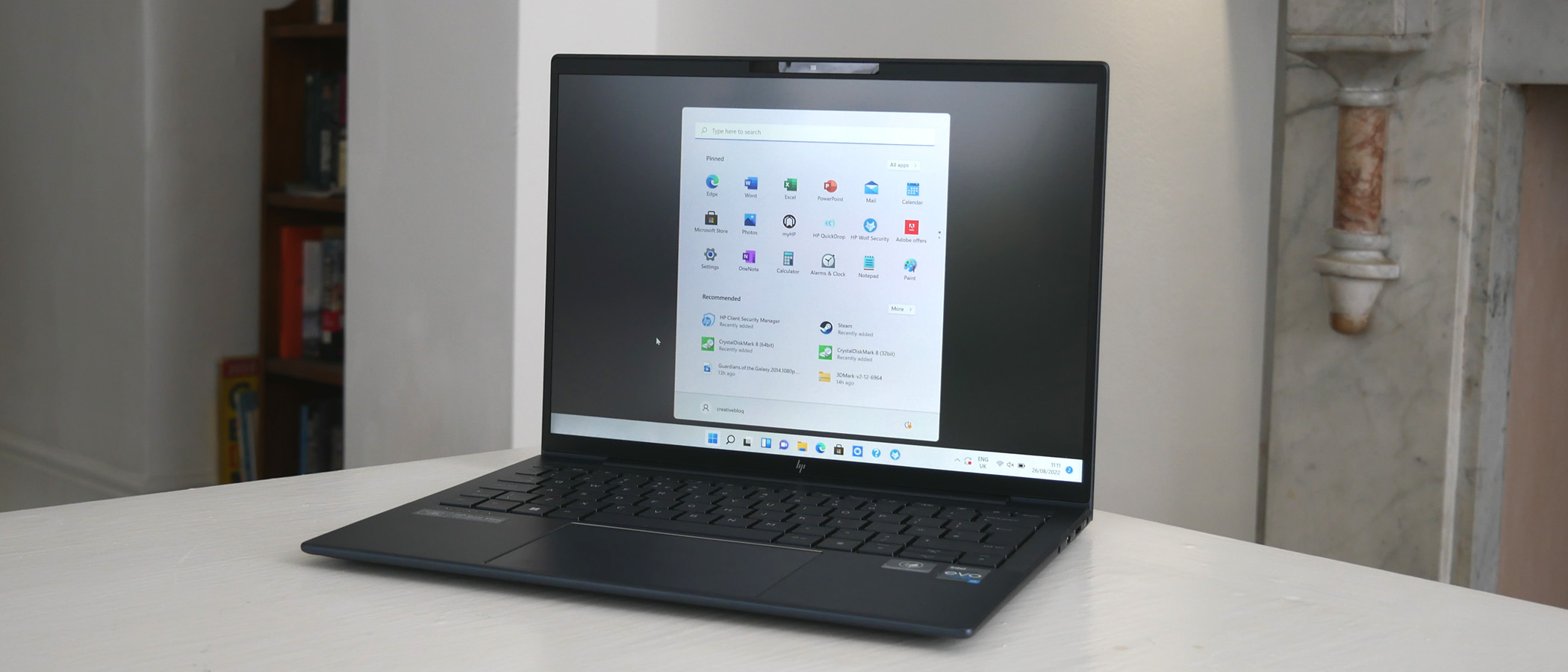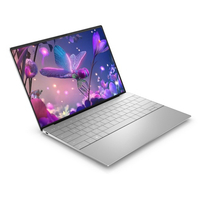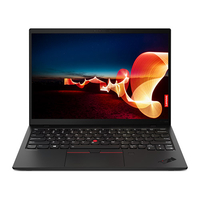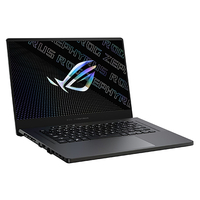TechRadar Verdict
There’s an awful lot to like about the new HP Elite Dragonfly G3. It’s really nicely built, seriously portable, offers stellar battery life and boasts an unusual 3:2 aspect format. But laggy performance, a screen with woeful viewing angles and a painfully high price make for a patchy overall proposition.
Pros
- +
Excellent build quality
- +
Stellar battery life
- +
Extremely portable
Cons
- -
Patchy performance
- -
Very disappointing screen
- -
Seriously expensive
Why you can trust TechRadar
HP Elite Dragonfly G3: Two-minute review
Premium and ultraportable, two concepts combined in one laptop, namely the new HP Elite Dragonfly G3. As the name implies, this is the third generation of HP’s super-skinny productivity-orientated laptop and it’s as upscale in terms of build and materials as it is diminutive in size.
The chassis is all aluminum and magnesium and feels very nicely put together. Strictly speaking, it’s just one step behind the very best laptops, including Apple’s portables, when it comes to build quality. That applies also to the keyboard bed which is very firm but not quite as rock solid as some of its competitors. But then at just 0.64 inches or 16mm thick, there is literally very little to this laptop.
Specs-wise, most of the main items are as you would expect. There’s a U Series Intel 12th Gen Core i7 processor, 16GB of RAM, and a 512GB NVMe SSD for storage. Where the Dragonfly deviates slightly from the norm is its 13.5-inch 3:2-aspect display. It’s essentially a 1080p panel with some extra headroom, lifting the native resolution to 1,920 by 1,280 pixels as standard (a 3,000 by 2,000 OLED panel is optionally available in some markets).
Elsewhere, you get Bang&Olufsen engineered speakers, a 5MP webcam, a 100W USB-C charger, and a 68WHr battery. The latter two are pretty beefy for so slim a portable. Ports-wise there’s a USB-C with Thunderbolt 4 port on each side of the chassis, plus an old-school USB-A on the right-hand side that is only possible on a chassis this thin thanks to a mini hinged flap. You also get a full-sized HDMI port on the left-hand side, which is unexpected, and a headphone jack.
As for flaws, there are three. First, none of this comes cheap, with our review config coming in at $2,112 or AU$3,22 (roughly £2,000 in the UK) and even the base spec flirting with $2,000. That does not compare well with the Dell XPS 13, which kicks off at 'just' $1,249.
Next up is the rather patchy performance. The component set is fine, and the pure CPU performance in synthetic benchmarks is in line with expectations. But unfortunately, there’s an awful lot of lag in the real world when installing and loading applications.
Finally, the 13.5-inch display has the worst viewing angles we’ve seen in years. Even sitting in an optimal position dead center in front of the display, there’s visible color and contrast shift in the vertical axis. It’s awful. In mitigation, the battery life is pretty epic, clocking in at over 14 hours. But at this price point, this laptop needs to be near perfect. And it’s an awfully long way from that.
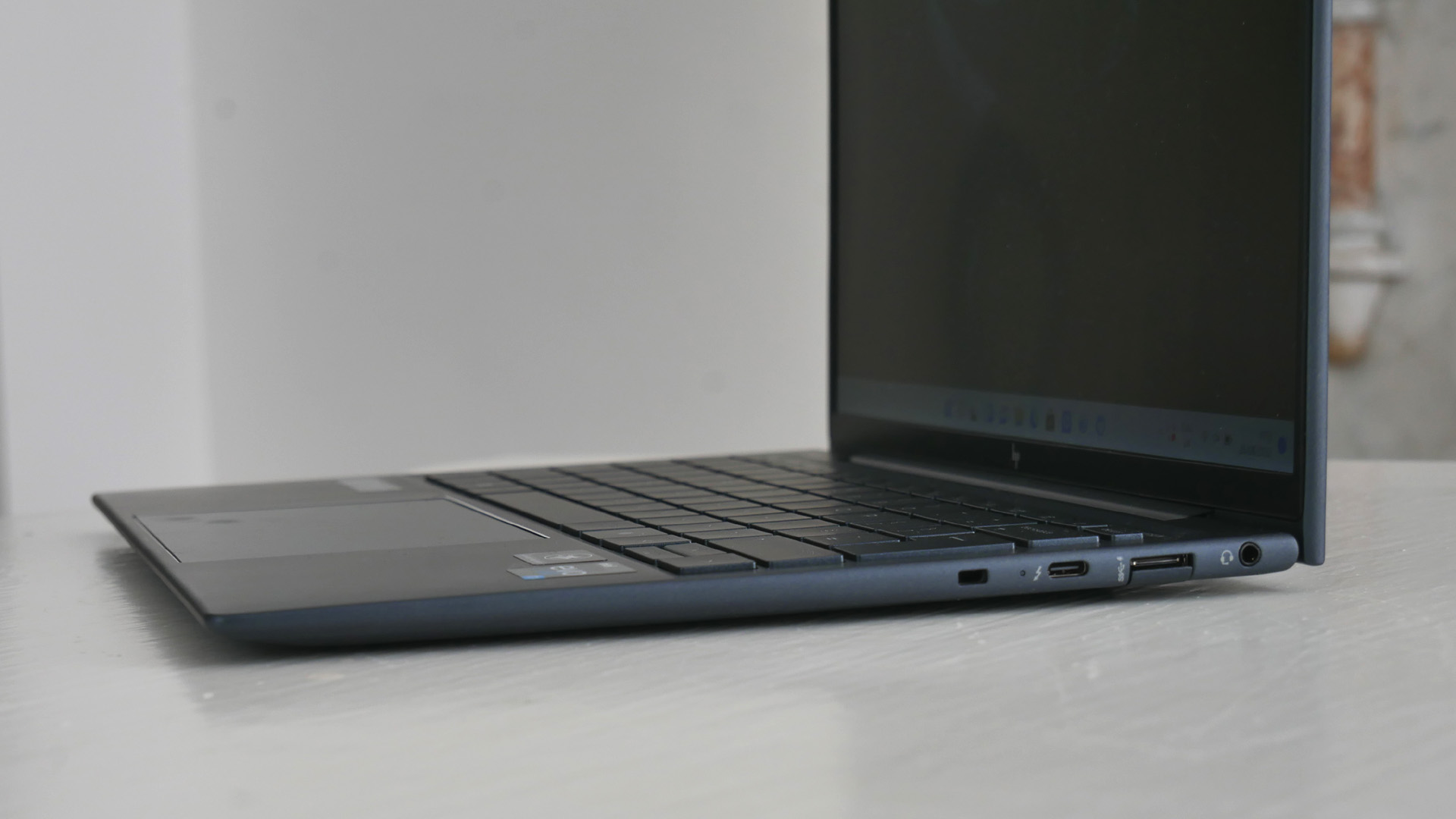
HP Elite Dragonfly G3: Price and availability
- Even the base price is expensive
- Doesn’t compare well with the likes of the Dell XPS 13 Plus
Here is the HP Elite Dragonfly G3 configuration sent to TechRadar for review:
CPU: Intel Core i7-1255U (2 performance cores, 8 efficiency cores, 4.7GHz max Turbo)
Graphics: Intel Iris Xe integrated
RAM: 16GB DDR5
Screen: 13.5-inch, 1,920 x 1,280, IPS
Storage: 512GB PCIe Gen 3
Optical drive: N/A
Ports: 2x USB4 / Thunderbolt 40Gbps, USB-A 5Gbps, 3.5mm headphone jack, HDMI 2.0
Connectivity: Wi-Fi 6E AX211 (2x2), Bluetooth 5.2
Camera: 5MP webcam
Weight: 2.2 pounds (0.99kg)
Size: 11.7 x 8.67 x 0.64 inches (29.74 x 22.04 x 1.64 cm; W x D x H)
Clocking in as configured at $2,112 or AU$3,22 (roughly £2,000 in the UK), this is one pricey premium ultraportable. Even the cheapest base model is a near-$2,000 system, which is a little painful when you consider Dell’s gorgeous XPS 13 Plus starts at just $1,299.
It doesn’t look cheap next to Lenovo’s Thinkpad series, either. It might feel like a premium product, but put simply the HP Elite Dragonfly G3 is extremely expensive, which makes some of its more obvious flaws tough to accept.
- Value: 2/5
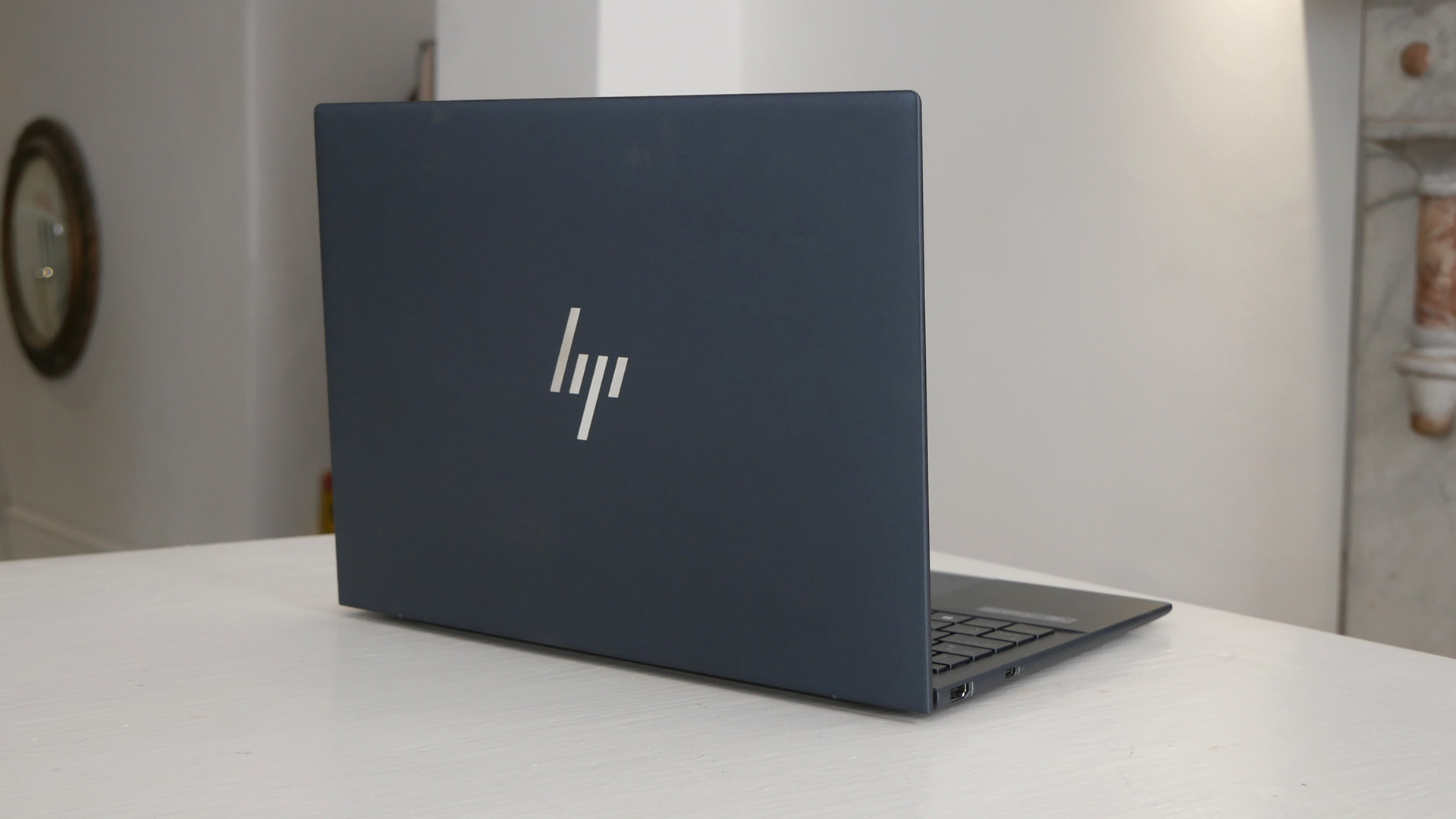
HP Elite Dragonfly G3: Design
- Super-slim chassis
- Really nice build quality
- Unusual 3:2 display
HP Elite Dragonfly series has always been a nice physical specimen and this G3 version is no exception. True, it does do away with the 2-in-1 functionality of its predecessor. But the format change arguably allows for a superior pure laptop design.
It’s about as rigid as you could reasonably hope for from a 16mm thick laptop chassis. In terms of keyboard flex, only Apple’s ludicrously rock solid beds do it better in this class of ultraportable. Despite that, the HP Elite Dragonfly G3 clocks in only 2.2 pounds (or just under a kilogram). The trackpad is generously proportioned, with a slick glass surface and a nice, tactile click.
HP has also got the edge over most of the competition in terms of connectivity, too, including not only two USB-C ports with Thunderbolt 4, but also a full USB-A port cleverly enabled by a hinged flap in the side of the chassis. The full-sized HDMI port is equally welcome and, when combined, the two larger ports help this laptop really deliver on its productivity and business-orientated remit.
Speaking of welcome design elements, the 3:2 aspect ratio of the display is definitely an intriguing alternative to the 16:9 or 16:10 masses. With these smaller 13-inch laptops, the extra vertical space makes for a much more comfortable screen for viewing documents, composing emails, and browsing the web, which is what this laptop is likely to major in.
Overall, the footprint is pretty compact, thanks to slim side bezels, though the chin and forehead are a little bigger than you’ll find on, say, a Dell XPS 13. Still, at least that allows for a decent 5MP webcam. For the record, the strong 100W USB-C power supply is remarkably compact and boasts a high-quality fabric-braided cable that just adds to the premium vibe.
- Design: 4.5/5
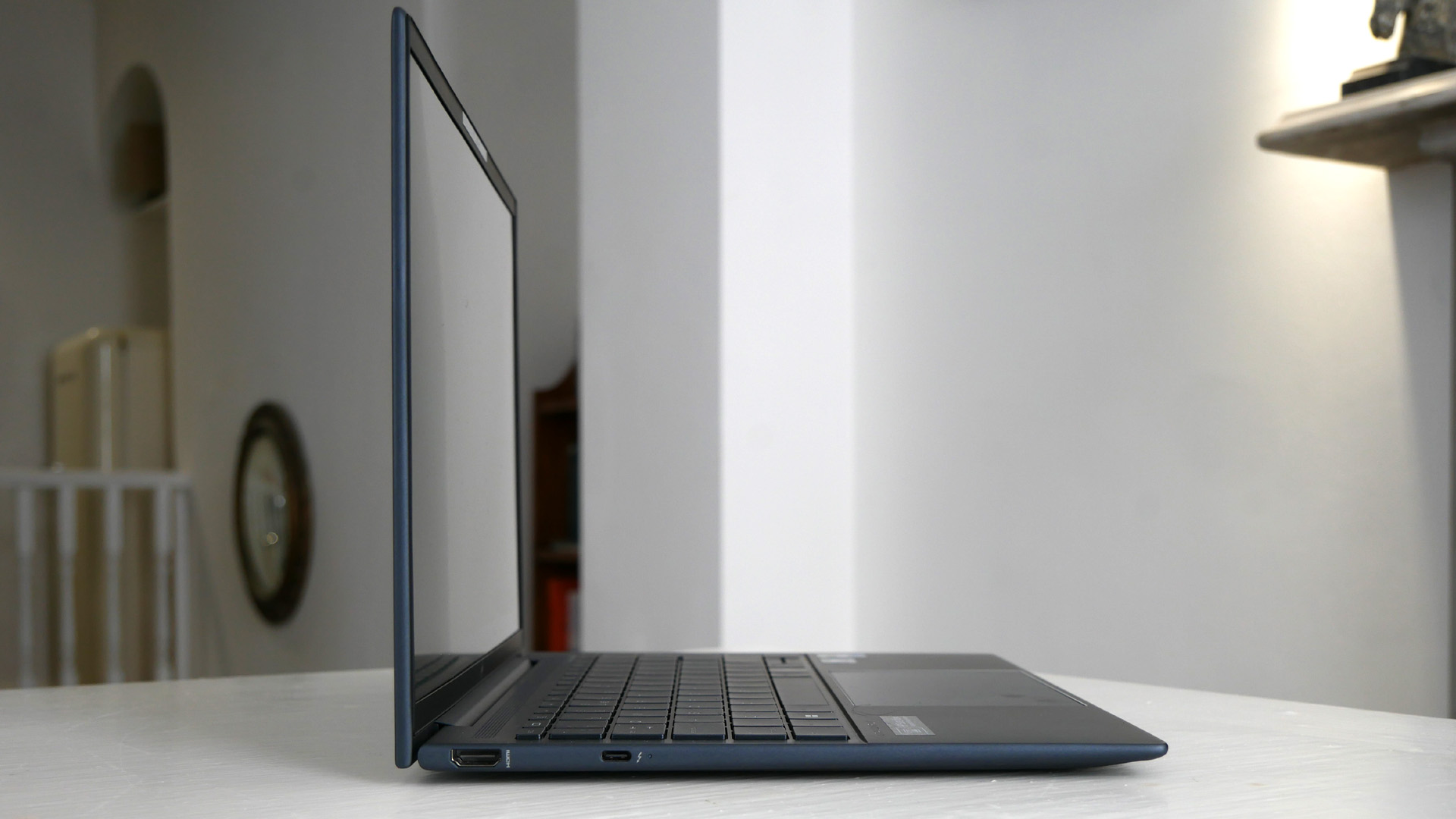
HP Elite Dragonfly G3: Performance
- Good components
- Patchy real-world performance
- Decent speakers
Here's how the HP Elite Dragonfly G3 performed in our suite of benchmark tests:
3DMark: Fire Strike: 4,560; Time Spy: 1,541
Cinebench R23 Multi-core: 6,992 points
GeekBench 5: 1,688 (single-core); 5,721 (multi-core)
PCMark 10 (Home Test): 5,343 points
PCMark 10 Battery Life: 12 hours and 18 minutes
Battery Life (TechRadar movie test): 14 hours and 4 minutes
On paper, the HP Elite Dragonfly G3 looks like a winner in performance terms. For an ultraportable, at least. The Intel Core i7-1255U CPU is one of Intel’s latest 12th Gen low-power items with two performance cores and eight efficiency cores. It clocks up to fully 4.7GHz and duly delivers the goods in synthetic benchmarks.
The problem is that, in the real world, the HP Elite Dragonfly G3 can be awfully sluggish when installing apps or loading up data-heavy software. The 512GB SSD is a WD SN530 drive, which somewhat disappointingly is a PCIe Gen 3 rather than Gen 4 model, and not even a particularly quick one at that. But it’s not that slow and can’t be entirely to blame for the Dragonfly’s occasionally very laggy performance. Nor can the 16GB of DDR5 RAM.
The limited 3D performance from the Intel integrated graphics is less of a surprise, although this is not remotely marketed as a gaming laptop and it really can’t fulfill that role. Another weak point is the 13.5-inch screen. It’s quite bright at max settings. But the viewing angles are atrocious, the worst we’ve seen on a premium laptop for years.
There’s better news from the Bang & Olufsen speakers. OK, there’s no bass to speak of, but the volume levels are good and the overall audio detail is reasonable. Yes, a MacBook Air is still far better. But as ultraportable PC laptop speakers go, the Dragonfly’s are certainly above average.
- Performance: 3/5
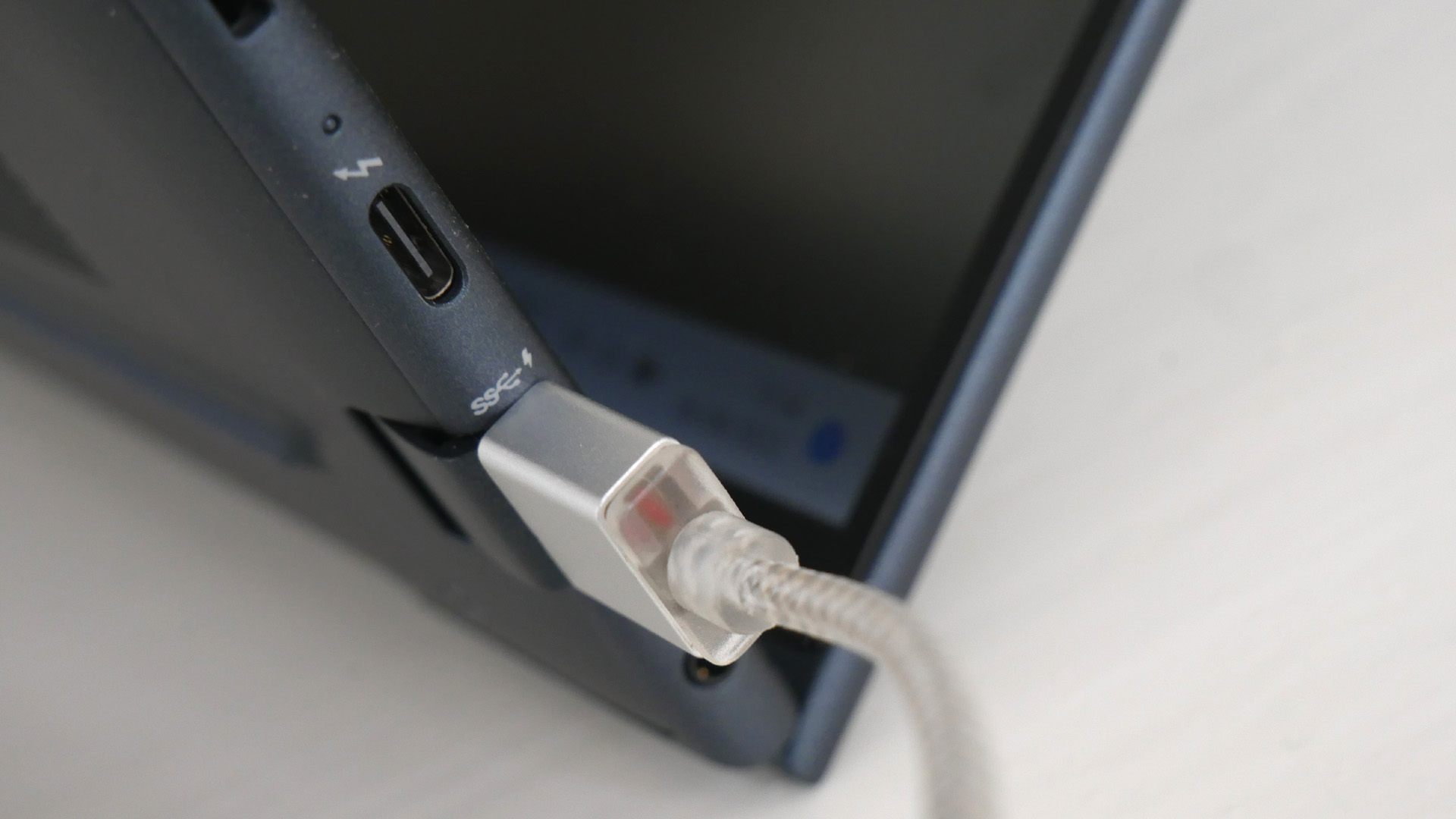
HP Elite Dragonfly G3: Battery Life
- Hefty 68WHr cell
- Excellent battery life
- Compact charging adapter
If the HP Elite Dragonfly G3’s performance is generally a little patchy, one aspect that doesn’t disappoint is battery life. We measured over 14 hours of 1080p video playback and more than 12 hours of everyday use at 50% brightness.
So, genuinely all-day mains-free operation is on offer. We also like how compact the power supply is and the fact that it’s USB-C rather than a proprietary barrel-socket affair.
- Battery Life: 5/5
Should you buy an HP Elite Dragonfly G3?
Buy it if...
You want a true ultraportable
Measuring just 16mm thick and weighing under one kilo, the HP Elite Dragonfly G3 is a seriously portable PC. That it achieves those numbers while maintaining great build quality and a really rigid chassis is impressive.
You appreciate a taller screen
The HP Elite Dragonfly G3’s 3:2 13.5-inch screen is usefully taller than the usual 16:9 widescreen panels and provides genuinely useful additional vertical space. It’s great for all kinds of productivity and is especially nice for document editing.
You want maximum battery life
The HP Elite Dragonfly G3’s 68WHr battery is beefy for an ultraportable and duly delivers outstanding battery life. You can expect over 14 hours of 1080p video playback and genuine all-day, all-purpose mains-free operation.
Don't buy it if...
You’re expecting reliable performance
The HP Elite Dragonfly G3 has a strong component set including a 12th Gen Intel CPU. In practice, however, this laptop’s performance can be patchy and laggy, especially when moving large amounts of data.
You’re looking for a bargain
The HP Elite Dragonfly G3 starts at nearly $2,000, even for the base configuration. That doesn’t compare favorably with the likes of the gorgeous Dell XPS 13 Plus, which starts at under $1,300. Ouch.
Bad viewing angles annoy you
The HP Elite Dragonfly G3’s screen has the worst viewing angles we’ve seen on a premium laptop for years. That should be solvable by choosing the optional OLED panel, but you really shouldn’t have to do that just to get decent viewing angles.
Also consider
Dell XPS 13 Plus
The HP Elite Dragonfly G3 is so expensive, it makes the ultra-slick Dell XPS 13 Plus with its invisible trackpad and nanoscopic bezels look like an absolute bargain. The 13 Plus has its flaws, of course, but it’s a deeply desirable thing.
Check out our Dell XPS 13 Plus review.
Lenovo ThinkPad X1 Nano
If you want pure productivity from an ultra-portable, look no further than the Lenovo ThinkPad X1 Nano. It’s absolutely no-nonsense in design terms, built to last, and yet still manages to be even lighter than the HP Elite Dragonfly G3.
Check out our Lenovo ThinkPad X1 Nano review.
Asus ROG Zephyrus G15
If you'd like a laptop with some gaming chops, the Zephyrus G15 is probably the best gaming laptop you can buy right now. With high-quality performance and design at an extremely competitive price, the only thing it lacks is a webcam - no video calls here.
Check out our Asus ROG Zephyrus G15 review.
HP Elite Dragonfly G3: Scorecard
| Value | Starting at nearly $2,000 even for the base configuration, the HP Elite Dragonfly G3 looks awfully expensive compared to the competition. | 2 / 5 |
| Design | The HP Elite Dragonfly G3’s slick, slim aluminium and magnesium chassis is a definite highlight and even offers surprisingly good connectivity. | 4.5 / 5 |
| Performance | Occasionally laggy responses and a screen with remarkably bad viewing undermine the HP Elite Dragonfly G3 as a performance proposition. | 3 / 5 |
| Battery Life | No question, outstanding battery life is one of the HP Elite Dragonfly G3’s main attractions. This is a true all-day ultraportable. | 5 / 5 |
First reviewed September 2022
How We Test
We pride ourselves on our independence and our rigorous review-testing process, offering up long-term attention to the products we review and making sure our reviews are updated and maintained - regardless of when a device was released, if you can still buy it, it's on our radar.
Technology and cars. Increasingly the twain shall meet. Which is handy, because Jeremy (Twitter) is addicted to both. Long-time tech journalist, former editor of iCar magazine and incumbent car guru for T3 magazine, Jeremy reckons in-car technology is about to go thermonuclear. No, not exploding cars. That would be silly. And dangerous. But rather an explosive period of unprecedented innovation. Enjoy the ride.
